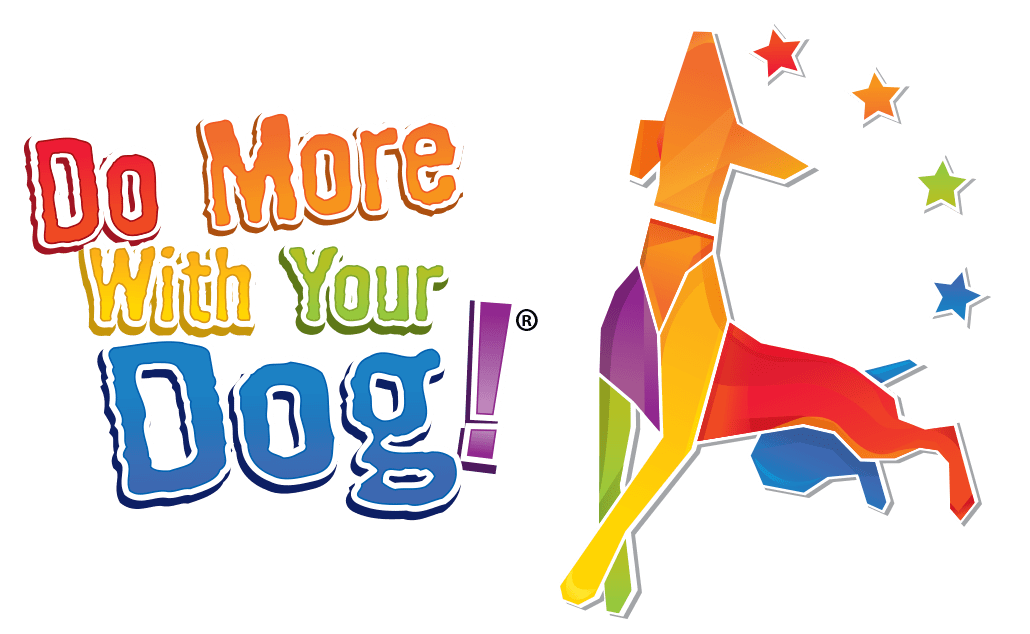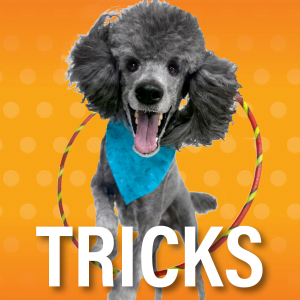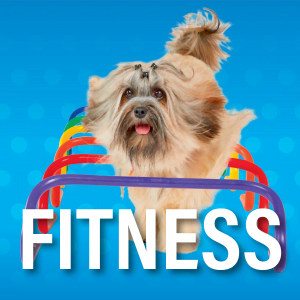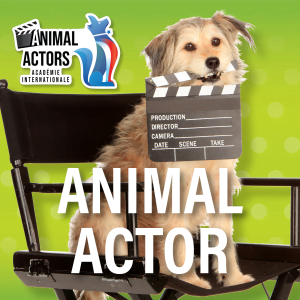How to earn your Trick Dog Champion (TDCH) title
Hooray… you’ve set a goal on becoming a Champion! The rules and examples are below. The orange button below is a printable PDF list of this same information.
Print the Champion application form

| wdt_ID | Sort Order | Trick Dog Champion Rules | --> |
|---|---|---|---|
| 1 | 1 | Be a Champion! | The esteemed title of Trick Dog Champion is awarded to exceptional dogs who demonstrate outstanding skill in performing a large number of difficult tricks, and who also demonstrate skill in every category of foundation behaviors. As with all Champion titles, this title (noted as TDCH) is appended to the prefix of your dog’s name. The Trick Dog Champion title is recognized by CKC. |
| 2 | 2 | How do I earn the TDCH title? | First, earn your Expert Trick Dog (ETD) title. Because of the esteem of a Champion title, we require a video submission to be reviewed by Do More With Your Dog! staff evaluators. To earn their TDCH, the dog must demonstrate skill in every foundational behavior category, including retrieving, targeting, distance work, etc. The Champion title is different than the lower titles in that it is judged as a “work as a whole.” If a dog is exceptional in some categories, and a little below par in another, they may still pass. We want to see a well trained, versatile, happy dog. The primary venue for dog tricks is in performances, demos, therapy visits, musical canine freestyle, and animal acting. The tricks will be judged in the context of these applications. The dog should be confident, consistent, happy, and able to work at a distance from you. |
| 3 | 3 | Rules | BRIEF DESCRIPTION: • Video submitted to staff evaluators; not CTDI • The TDCH title has 9 categories. • Make a video (or videos) of your tricks according to the application form. • The TDCH title is evaluated by Do More With Your Dog staff, and not by a CTDI. • If any of the videos do not pass, we will contact you and tell you specifically what we need redone, and you can submit a new video for that skill when you are ready (at no additional cost). We want you to succeed! • Minimum age requirement for this title is 6 months. --------------------------------------------- • Age: 6 month minimum. Stay tuned for a Puppy TDCH. • Collars/Leashes: Aversive collars are not permitted. Tricks shall be off-leash. An exception may be permitted if necessary to comply with leash laws while outdoors. In such a case an unrestrictive harness shall be used with a long-line. • CUES: The handler may give multiple cues within reason (about 3 cues). Praise and encouragement at any time is fine. • Service dogs/Disabled/Senior dogs: We commend your endeavor. We recognize that these dogs may have unique needs and are happy to work with you to establish alternate criteria. • Substitutions: At the champion level, we allow you to substitute similar tricks which demonstrate the same skill being tested. Email us with your questions. • Treats: Treats and toys may be used as a reward after the trick is finished, but may not be used to lure the dog into the behavior. Keep treats hidden from the dog, in a pocket or treat bag, during the trick. • Helpers: The dog shall be handled by only one trainer. No other person may help with the trick (except as specified for a particular trick). • Physical Manipulation / Pressure: Handler may not physically manipulate the dog. Petting is fine. Pressuring the dog (which may include stern voice, stern eye-contact, crowding or hovering over the dog, or putting your face or hands close to the dog’s head) is not permitted. • Qualifying: Applicant has 3 months to resubmit any portion of the test that did not qualify, at no additional cost. Application fee will not be refunded. |
| 4 | 4 | Video Tips for Success! | • We accommodate most video formats, including YouTube and Facebook • If possible, compile tricks into one video • Check your surroundings and attire • Remove slip collar • Give your little champ a kiss on the head 😉 For the Champion title, there should be no luring and no treats in your hands, so make that clear in your video. Questions? Email our friendly and knowledgeable evaluator team: [email protected] |
| 5 | 5 | Watch a Sample Champion Submission Video | Clear and well lighted video—easy to see the team perform the tricks. No treats out or in hands. Very clear and precise trick performance with minimal cues. Handler allows dog to work at a little distance. Expert tricks are performed flawlessly. . Clear and well lighted video—easy to see the team perform the tricks. No treats out or in hands. Very clear and precise trick performance with minimal cues. Handler allows dog to work at a little distance. Expert tricks are performed flawlessly. |
Coordination/ Rear-End Awareness: The purpose of this exercise is to show one trick where your dog is carefully and precisely using his hind feet. Dog’s don’t often think about where their hind feet are, so this is a difficult skill for them.
| wdt_ID | Sort Order | 1. COORDINATION: Submit one coordination trick. Here are some examples. | Description | Video1 | Video2 |
|---|---|---|---|---|---|
| 1 | 1 | Double Beam | Dog walks double beams, with two paws on each beam. This trick challenges the dog’s balance and coordination. The rails should be roughly chest width apart and there should be a gap of at least a paw width between the rails. The rails should be at least twice the length of the dog as measured from nose to hip. The height of the rails is not important as long as the dog is clearly placing his feet on each rail for the length of the board. | ||
| 2 | 2 | Rainbow Ladder / Cavalettis | Dog trots through a horizontal ladder. | ||
| 3 | 3 | Skateboard | Dog pushes skateboard with two feet, continuously for a minimum of 5 feet/1.5m. | ||
| 4 | 4 | Push a Shopping Cart | Front paws on cart, walk with hind legs. The dog pushes a shopping cart or similar object by placing his front paws on the handle of the cart and walking forward on his back legs. The dog should demonstrate placing his feet on the cart and moving the cart from a stopped position. The cart should be pushed forward a minimum of 5 steps. | ||
| 5 | 5 | Barrel | Dog rolls a barrel or inflatable peanut with his front feet. (2 paws on top, dog rolls): Dog will place two paws on a barrel or peanut and propel the item forward at least 5 steps. Front paws should remain on the item being pushed for the complete 5 steps. Handler should not push the peanut but the dog should be the one pushing forward. | ||
| 6 | 6 | Back Up | Dog backs up 5 feet. Dog backs up 5 feet/1.5m. Handler may move with the dog but body pressure should not be pushing the dog to move backward. Dog may be in front of the handler facing the handler or in heel position moving backward with the handler. | ||
| 7 | 7 | Paw Pods - 4 paws (or yoga blocks) | Paw pods 4 feet on 4 targets: This trick uses 4 balance pods such as the Fit Paws Paw Pods or TotoPawds or yoga blocks. The pods are placed on the ground at the approximate spacing that will allow the dog to stand with all four feet squarely under him. The dog independently places one foot on each pod and balances on the pods. The handler should not manipulate the dog or place the dog’s feet on the pods. | ||
| 8 | 8 | Orbit | Dog circles handler backward. The dog may start in any position next to the handler, when asked the dog will back in a circle 360 degrees around the handler ending in the same location he started from. Only one repetition and one direction is required for this trick, the dog may circle either clockwise or counterclockwise. | ||
| 9 | 9 | Other | You may submit a different example of coordination using rear-end awareness. |
Mouth Target: The purpose of this exercise is to show tricks using your dog's mouth. *In special circumstances where mouth behaviors are not tolerated by the dog, substitutions may be allowed.
| wdt_ID | Sort Order | 2. MOUTH TARGET: Submit TWO mouth target tricks. Choose from the following. (In special circumstances where mouth behaviors are not tolerated by the dog, substitutions may be allowed.) | Description | Video1 | Video2 |
|---|---|---|---|---|---|
| 1 | 1 | Hold or Carry an Object | Hold an object (6 seconds) or carry an object while walking with you (10 seconds). Release object to your hand. | ||
| 2 | 2 | Retrieve Object to Hand | Dog fetches an object 12 feet/3.6m away and releases to your hand. | ||
| 3 | 3 | Pull a Rope | Dog pulls a rope to move an object. (Ex: pull open a door or crate door; pull a wagon). The dog should do this all on his own, with no help from the handler. The rope should be a regular rope, and not similar to a tug toy. |
Paw Target: The purpose of this exercise is to show tricks with your dog precisely placing their paw.
| wdt_ID | Sort Order | 3. PAW TARGET: Submit one paw target trick. Choose from the following. | Description | Video1 | Video2 |
|---|---|---|---|---|---|
| 1 | 1 | Ground Target | Dog places paw deliberately on a small object or mark (ex: step on a tap light.) | ||
| 4 | 2 | Raised Mark | Dog paw-touches a raised object (ex: close a door with paw; bat a bell hanging from doorknob; flip a light switch on the wall.) |
Nose Target: The purpose of this exercise is to show a trick where your dog targets and touches something with their nose.
| wdt_ID | Sort Order | 4. NOSE TARGET: Submit one nose target trick. Choose from the following. | Description | Video1 | Video2 |
|---|---|---|---|---|---|
| 1 | 1 | Target Stick or Hand-Held Target disc | TARGET STICK: Dog nose-touches the end of the target stick. Move the target stick, varying its height and location. Show several times in a row, unedited, moving the target each time and varying its height and location. The dog should be targeting the stick with his nose and not his mouth. Videos of the dog biting the target do not meet the criteria for nose target. HAND-HELD DISC: Same as above, but with a flat disc such as a jar lid. |
||
| 2 | 2 | Free Object | Nose-push a ball. Repeat several times, showing that the dog is following the moving target. |
Scent: The purpose of this exercise is to show a trick where your dog finds something specific by scent.
| wdt_ID | Sort Order | 5. SCENT: Submit one scent trick. Choose from the following. | Description | Video1 | Video2 |
|---|---|---|---|---|---|
| 1 | 1 | Shell Game | Perform twice in a row, unedited, with the correct cup (the one with a treat) in a different position each time. | ||
| 2 | 2 | Nose-Work Box Search | Search 5 boxes and indicate. Hot scent must be non-food scent. Boxes shall be closed. | ||
| 3 | 3 | Scent Articles | Dog searches 5 identical objects (ie: dumbbells or tennis balls) and retrieves the one with his owner’s scent. | ||
| 4 | 5 | Other | A building search with non-food hides can be accepted. |
Distance: The purpose of this exercise is to show your dog performing cued behaviors at a distance away from you. This is more difficult than responding to cues close to you.
| wdt_ID | Sort Order | 6. DISTANCE: Demonstrate BOTH of the following skills. | Description | Video1 | Video2 |
|---|---|---|---|---|---|
| 1 | 1 | Go to a Mark / Pedestal | Send dog 20 feet (6 m) away to a mark or raised platform. | ||
| 2 | 2 | Cued Behaviors at a Distance | Perform any 6 cued behaviors on a mark/pedestal 12ft (3.5 m) away. OK to go in and treat between each. Accepted: Come, Go Tunnel. Not accepted: Stay. The dog starts each behavior on a mark/pedestal (can also be on the flat/ground) 12 feet/3.6meters away or the dog can be sent 12 feet/3.6meters from the handler to perform distance cues. The dog performs 6 cued behaviors from that distance. Distance tricks performed one after the other in succession will often score the highest marks (score of 4.) Distance tricks that are rewarded after each trick are allowed but may score lower depending on the overall quality of the tricks shown. Not accepted: Stay, Leave it, Catch, Mount Pedestal/get on, go to target/place/kennel Accepted examples: Spin left/right, Down, Speak, Stand, Sit, Bow, Roll Over, Play Dead, 2 on 2 off, Sit Pretty, Wave,Come, Go Tunnel, Cover Eyes, Head Down, Tap Light, Back up When setting up distance behaviors where the dog is moving to an object use lateral behaviors for sends such as dog on 12 ft/3.6m mark sent laterally to a jump or tunnel. Setting up obstacles in front of the dog's direct path and recalling the dog over or through them is not the best demonstration of distance work. Agility "gambles" or distance work where the handler remains 12 feet/3.6m from the dog may be accepted but should be limited to no more than two distance exercises. Come is accepted as a distance behavior for one of the six behaviors needed but multiple recalls where the dog is called to the handler over an obstacle would not be counted. For example recalling the dog from 12 feet /3.6m off the pedestal to the handler can count as one of the six behaviors but one can not call the dog over a jump/tunnel/obstacle in a straight line recall for additional behaviors to count as part of the six behaviors needed. Sending the dog laterally to perform a behavior versus a straight line "recall" would count. |
Signals: The purpose of this exercise is to show your dog responding to hand signal cues, with no verbal cue.
| wdt_ID | Sort Order | 7. SIGNALS: Perform any 6 behaviors with only silent cues. You may go in and reward between each trick. | Description | Video1 | Video2 |
|---|---|---|---|---|---|
| 1 | 1 | Signals | Hand/Body signals (6 behaviors): Dog will perform 6 hand/body signals as cued by the handler. Cues may be any behaviors. No verbal cues should be given but a marker word or clicker may be used after the behavior. Silent cues performed one after the other in succession will often score the highest points depending on presentation. The handler may reward in between each signal but that may not score the highest points for the exercise. There is no distance requirement for hand/body signals and the handler may be close to the dog but should not be hovering over the dog. The handler can combine the hand/body signals with the distance work in exercise six if desired but that is not required for this section. Cue/index cards, signs, etc are not accepted for signals for TDCH as those are not the exact skills this exercise is looking for. |
Chain: The purpose of this exercise is to show your dog executing a multi-part trick, given only one cue.
| wdt_ID | Sort Order | 8. CHAIN: Perform a behavior chain. | Description | Video1 | Video2 |
|---|---|---|---|---|---|
| 1 | 1 | Demonstrate a Behavior Chain | When given a single cue, the dog performs a chain of two or more behaviors. Examples: roll yourself in a blanket, basketball in net, open mailbox and fetch mail, tidy toys into toybox. Agility chains are generally not accepted. Definition of chain: When given a single cue, the dog performs a chain of two or more behaviors. Examples of behavior chains: • roll yourself in a blanket (dog grabs blanket in mouth and rolls over while holding blanket) • fetch basketball and drop in net • open mailbox and fetch mail • tidy toys into toybox • retrieve over a jump • pick up a toy, place it in a wagon and pull the wagon • roll out a mat and take a bow • open crate, go in crate and close crate • open crate, go in crate and turn off light/push button Behavior 1 and Behavior 2 should be clearly identifiable as distinct and different behaviors and the handler should not give any additional cues or prompts between them. Example: Basketball-The handler cues “Basketball” and tosses a ball on the floor, after which the dog picks up the ball, then the dog takes the ball to the basket, places his front feet on the hoop and drops the ball into the basket. The handler remains silent and still during the entire performance. The handler should not give extra cues (including verbal cues, hand signals, luring, body movements, clapping, body pressure, etc.) The handler should remain mostly quiet and motionless until the end of the chain. It is recommended to use a camera angle that allows both the dog and handler to be seen in the video. Behavior chains must be competed off leash. Agility obstacles are not the best examples for the chain exercise. Chains should also be set up to show the dog is making a choice to complete the behavior. For example a chain should not be set up so that the dogs path only allows the dog to take the jump/object such that the dog can not go around a jump/object. Example: setting up a retrieve over a jump in a hall or area where the dogs only allowable path is to go over the jump is discouraged. Any Questions? Email us: [email protected] |
Five Expert Level tricks: Demonstrate 5 of Your Best Expert-Level Tricks.
| wdt_ID | Sort Order | 9. Demonstrate 5 of Your Best Expert-Level Tricks | Description | Video1 | Video2 |
|---|---|---|---|---|---|
| 1 | 1 | Demonstrate 5 of Your Best Tricks | Choose five tricks from the ETD list. Tricks should be difficult and also entertaining. If a Trick Dog Champion performed on a TV show, what tricks would viewers would like to see? (If you have already shown an Expert trick for another part of this video, it can count here as well.) |






![Stunt Dog Ring Trial Ticket [OH Oct 4 & 5, 2025]](https://domorewithyourdog.com/DogTricks/wp-content/uploads/2020/09/StuntRingTrial-324x179.jpg)
 Order Hotline (call/text/WhatsApp): +1 (661) 803-5829
Order Hotline (call/text/WhatsApp): +1 (661) 803-5829